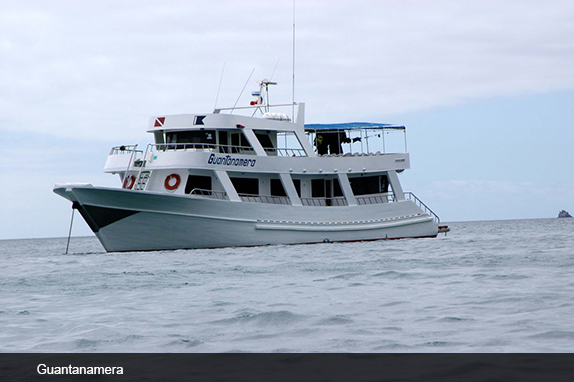
I need to confess: I am not fond of house pets. Most of my friends know this about me. Some of them know that as a toddler I suffered some sort of abuse involving dogs. I don’t remember it clearly. My maternal grandfather was the abuser.
Despite this, when I was five or six I did have a Dalmatian I loved. His name was Roger. World War II was heating up, and people were urged to contribute to the war effort in a variety of ways. We practiced air raid drills behind double window shades. We collected “Bundles for Britain.” And my parents sent Roger to the front, with the understanding he would be returned to us when the war ended. Instead of getting him back, we received a letter from the War Department regretting to inform us that our family member could no longer be trusted in a peacetime environment. Without asking our permission they had put him down.
From that time forward, I did own dogs now and then but it was usually because the person I was living with wanted one. Once I even had a goat. I kept chickens, filled a rabbit hutch when my children were young, hosted a hamster, and for a brief time owned a pet tarantula. The tarantula arrived in a mail tube with tiny holes punched in one end, a gift from the director of the Arizona-Sonora Desert Museum and his wife.
It’s almost inconceivable for a lesbian not to own a dog; they’re supposed to come with the territory. More than once I have been made to feel like a bad person because of my reluctance to join the club. I enjoy my friends’ love of their animals, understand how much they mean to them. But my partner and I are content with a pair of desert tortoises, Howard and Maude. They live in our back yard, hibernate in the winter, and come out to greet us each spring. They are no problem when we travel and no one needs to babysit them when we go out. One year Maude hatched a couple of baby tortoises, but the neighborhood cats made snacks of them. Damned cats.
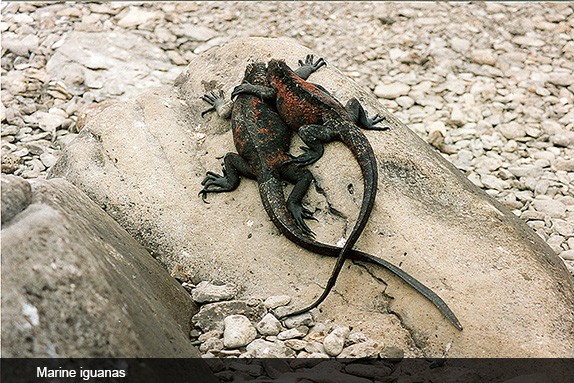
At 76 I’ve made peace with my resistance to incorporating a dog or cat into our household. And I think most of my good friends have made peace with my rather unorthodox attitude toward domesticated animals as well. At least I hope they have.
But undomesticated animals are something else altogether. I thrill to all animals in the wild. I could watch them for hours, observing how they move, play, eat, teach their young, and interact with other species. The Great Migration of wildebeest and zebra on the east African plain. Elephants at Chobe in Botswana. A lioness teaching her two adolescent cubs to hunt in Zimbabwe. Marine iguanas sunning themselves on rocks in the Galápagos Islands, looking for all the world like miniature dinosaurs. Blue-footed boobies warming their eggs. Male frigate birds with their bright red throat pouch puffed so large they can’t eat until a sexual encounter with a female allows the pouch to deflate. Giant tortoises. A pelican’s nest, to which an adult has just returned with fish, swallowing and regurgitating it before feeding the processed food to its young.
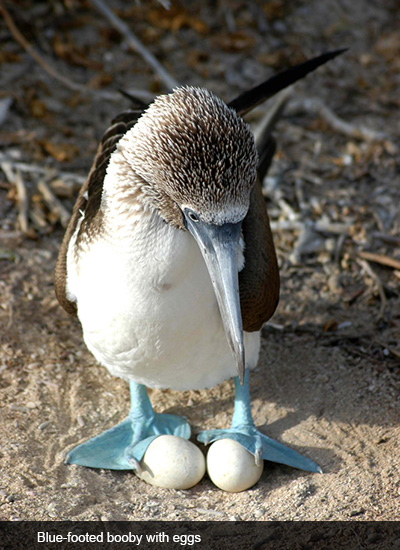
I don’t have to travel to Africa or the Galápagos for such experiences. I have them here as well, discovering sprightly antelope along the highway in Northern New Mexico, coming upon a herd of elk that ambled onto the carefully tended lawn of a hotel at the south rim of Grand Canyon, watching a lone coyote watch me for a full fifteen minutes down at Bosque del Apache, or photographing a coiled rattler from a hiking trail in the Sandias.
One of my grandsons, Daniel, has a special way with animals. He speaks their language and it doesn’t have to be out loud. When he was about ten or twelve, he was visiting and we stopped along Tramway to look at the group of buffalo that Sandia Pueblo nurtures in the fields between I-25 and the foothills. Daniel stood by the big fence while I waited in the car. I couldn’t hear him speaking, but knew he was communicating with those immense animals that had gathered far from the road. Suddenly, they all began moving toward him, slowly, steadily. He had called them, and they were responding.
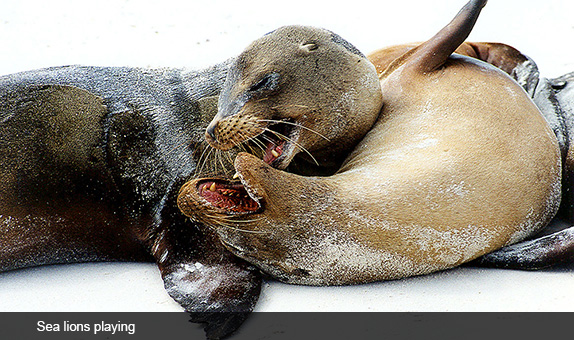
Daniel hates zoos. He and his friends have picketed the one in Montevideo, Uruguay, where he lives. I understand why he protests the limiting space and unnatural conditions most zoos afford their residents. But I tell him the vast majority of people don’t have the money to travel to where they can see animals in their native habitats. Going to a zoo is the only way most children—and even adults—will ever see a real live monkey or tiger or giraffe. Unfortunately, in some cases zoos are the only place certain species survive.
About ten years ago, my partner Barbara and I decided we wanted to do something spectacular with as many of our grandchildren as possible. There are ten of them. We were established enough by then that we felt we could take a considerable portion of our retirement savings and plan a very special trip, yet still young enough that we could enjoy it ourselves. We decided we would treat them to a week in the Galápagos Islands.
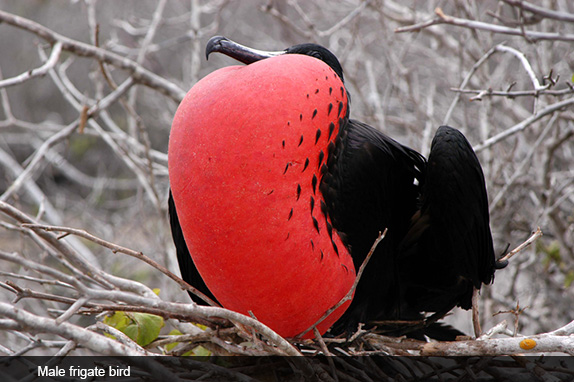
Our grandchildren live on three different continents. Once we decided on our destination, making the trip a reality took almost a year. We researched small boats. We knew we wanted a group of people who knew one another, and so talked a few friends into completing the total of 16 passengers accommodated by the Guantanamera. We found a creative travel agent, willing to get everyone to our point of departure as inexpensively as possible. We were dealing with three different languages as well, and found a naturalist fluent in them all. Children had to be at least six years old to participate in a Galápagos cruise, so we were only able to invite the oldest seven. By the time we set sail, they ranged in age from six to sixteen.
The kids, too, enthusiastically took part in planning for this once-in-a-lifetime adventure, each in accordance with his or her age. Those old enough to do so read Darwin’s Voyage of the Beagle. The six-year-old’s mother read him a children’s version. Cyberspace buzzed as they wrote to one another, posing questions and talking about what excited them most. Cousins who rarely saw one another chose the partners they wanted to share their cabins.

Travel is one of my greatest joys—right up there after loving and writing. Barbara and I are fortunate to be able to travel a lot. But I don’t believe either of us can remember a trip that has given us more pleasure than this one. The Guantanamera met us when we deplaned on the small island of Baltra. It’s eight crewmembers immediately warmed to the children, letting them become involved in as many of the on-board tasks as was reasonable. The ship’s cook, who worked wonders in his tiny galley, modified his menus to take into account each child’s food preferences. We usually motored or sailed by night, landing near or at one or two of the small islands a day. Each had its resident colony of birds and sea mammals.
Six hundred miles off the west coast of South America, the entire Galápagos archipelago is an Ecuadorian National Park, with strict rules designed to protect the animals. At that time, the number of boats—most small, a few much larger but no obscene cruise ships—allowed into each port per day is tightly regulated. Some islands do not have docking facilities; when visiting these, the boats drop anchor offshore and you take a rubber dinghy to effect what they call a wet landing.
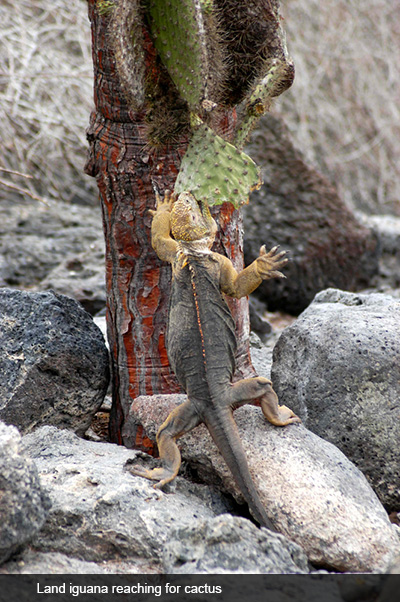
Limited groups of visitors, each with a registered naturalist guide, walk along prescribed paths through fields of animal inhabitants. Most of the hikes are one or two miles, a few longer. If a bird or other animal blocks your way, you walk around it. A native inhabitant can come up to you, even light on your arm or nuzzle if so inclined. But you are not supposed to initiate a touch.
That week we sat on beaches among hundreds of sea lions, sunning themselves, playing, sometimes coupling or fighting. We watched the more than 50-step mating dance the male and female albatross engage in; these great birds pair for life. We also saw a mother albatross teaching her offspring to fly, bringing him to the edge of a steep cliff and urging him off it into the air. An albatross can spend six months at sea.
In gentle shallows, we waded with white-tipped sharks. At an inland lagoon we saw hundreds of deep pink flamingoes. We loved observing a large colony of marine iguanas, many sunning themselves with their arms around each other. On another island, land iguanas displayed a very different behavior; I have a series of photos of one of them reaching for a low-hanging cactus fruit, pullin the fruit down with its mouth, and finally devouring it.

There were many lessons about how different birds and animals adapt to their environments, and these lessons were particularly accessible as we cruised from one island habitat to another. Some cactus grew close to the ground, while others had become trees to escape their animal predators. The older kids were excited to see Darwin’s famous finch. Some beaches were covered in fine white sand, some in glistening black, and Rábida Island’s sand was a deep red.
On the only inhabited island, Santa Cruz, we got off the boat and spent one whole day. A highlight was taking a bus into the highlands where, when we were eating lunch at a country restaurant, someone came along shouting: “Las tortugas! Las tortugas!” On Santa Cruz the giant tortoises lay their eggs on the beach, travel inland to the higher elevations and then return, all according to some internal timetable. Near this island’s port we had visited the Darwin Institute, where different species of tortoises can be seen in confinement. But coming across them in the wild, crouching beside them eye-to-eye, was an experience none of us will forget. I have a photograph in which the tortoise is twice as large as the grandchild squatting in the grass beside it.
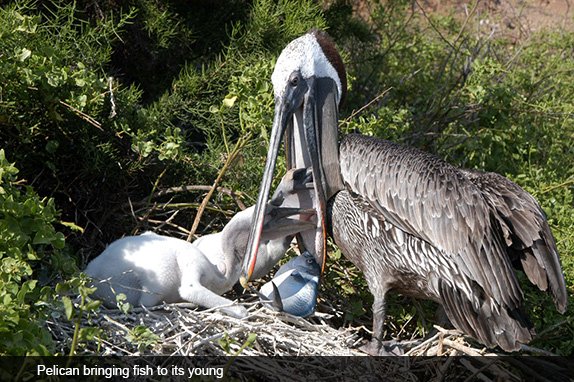
Ten years have passed. Each grandchild has grown into his or her older self, followed particular interests, in some cases chosen their fields of study. But they all still talk about that week we spent together, exploring a world that is becoming more and more despoiled as civilization encroaches on the wild places. What they learned about evolution, animal accommodation and behavior, and a week aboard a small South American motor vessel, will always be with them. The ties they strengthened among themselves and with us are also precious. But the very best thing they got from that trip was an intimate knowledge about other species in habitats where they are fully respected. We all learned an important lesson about respect.
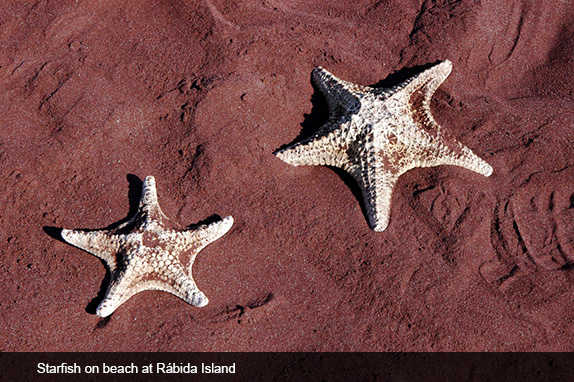

August 02, 2013